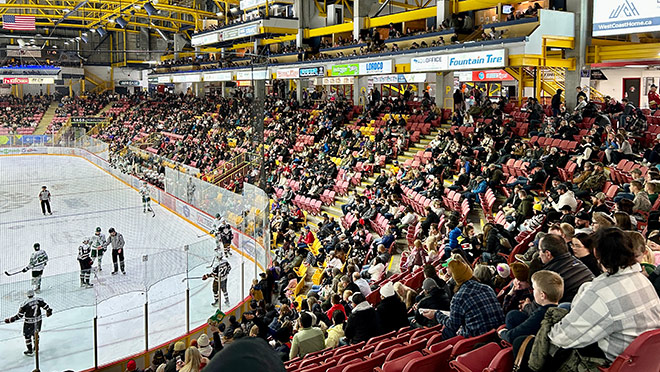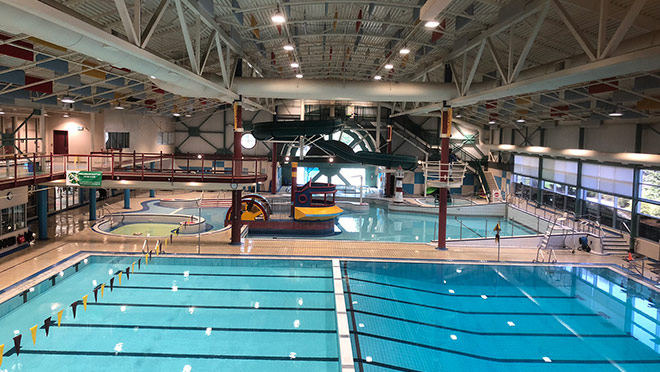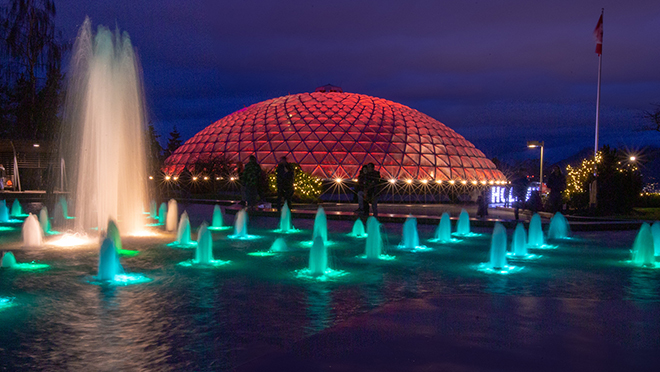Chilliwack ice arena heats pools, cuts greenhouse gases

City installs system to heat pools with "wasted" energy from ice arena
Part of a series on BC Hydro Clean Energy Champions: businesses, homes, and institutions – large and small – recognized for reducing their reliance on fossil fuels.
In a perfect world, every large hockey arena in Canada would be located right alongside a pool. It's a match made in CO2 reduction heaven.
"When you make ice, you make a lot of heat," explains Eric Schulz, superintendent of recreational facilities for the City of Chilliwack. "And in most arenas, most of that heat is sent up to a water tower on the roof and blown off into the atmosphere."
That, stresses Schulz, is an enormous waste of energy. And it doesn't have to be that way.
Sometime this fall, Schulz and his team – working with the engineering firm Polar – will switch on a heat recovery system that will pump heat from the ice arena at the Chilliwack Coliseum to swimming pools in the neighbouring Chilliwack Landing Leisure Centre. Once up and running, it will offset the heating loads of the pools and hot tubs, dehumidifiers, and domestic hot water, reducing the building's CO2 emissions by 55%.
And it will save the City more than $72,000 per year in energy costs – enough to payback the project's costs within five years.
Not bad for a project that was a retrofit instead of a pre-planned feature. Heat from the arena will be carried via pipes running under a parking lot between the two facilities.
"If you can, place your pools near your rinks," says Schulz. "It works so effectively and saves so much on energy costs and reduces greenhouse gases. And you can share amenities, such as a reception area and perhaps even change rooms."
The City of Chilliwack has used waste heat recovery in the past at its curling and community centre, and at the Sardis Sports Complex Rink 3. But the Chilliwack Landing Leisure Centre Energy Recovery Project will give rise to similar projects as the city grows. Schulz says the existing older Sardis Sports Complex rinks 1 and 2 could offer future waste heat recovery opportunities similar to the Chilliwack Landing project.
Complexities at the Chilliwack Landing project included a tight squeeze for new equipment in the pools' mechanical room. Chalk it up to another lesson learned.
"Build extra space into your mechanical rooms," he says, offering advice to other cities and municipalities. "Down the road, there will likely be an even newer technology and you don't want to be cramped."

Big arena, big savings
Home to the Chilliwack Chiefs of the B.C. Hockey League, the 5,000-seat Chilliwack Coliseum – built in 2003 – actually houses two NHL-sized ice surfaces. That makes for what Schulz calls a "huge cavernous area" in which the ice plant has to work extremely hard, and in doing so, creates a lot of heat.
Schulz said the City was inspired in part by the heat recovery project at the Aldergrove Credit Union Community Centre, which features a large pool – Metro Vancouver's only year-round outdoor pool – heated in part by recovered heat from the adjacent ice rink. Chilliwack loved what they saw in CO2 emission savings, and in the rebates Aldergove got from BC Hydro and FortisBC.
Nearly $650,000 of the Chilliwack Coliseum's heat recovery project costs will be covered by rebates coming from BC Hydro and FortisBC. The project also includes replacement of 20-year-old natural gas atmospheric boilers in the pools facility with more efficient modulating condensing boilers.
"The project cost will be around $900,000, so those rebates really help," says Schulz. "That's why, at energy cost savings of $72,000 a year, the payback could be as little as three years, or more likely, five years."
And then there are the CO2 emission savings. Over the heat recovery system's lifetime, savings are expected to be 8,275 tonnes of CO2. That's equivalent to the annual carbon capture from planting more than 400,000 trees or the same CO2 reduction as taking more than 1,700 cars off the road for a year.
In its 2022 Community Climate Action Plan, the City of Chilliwack reported that 52% of CO2 emissions generated in the community were from building energy use. Another 41% are from transportation. The plan calls for a 40% reduction in greenhouse gas emissions by 2030 and outlines the steps to get there.
Related:

